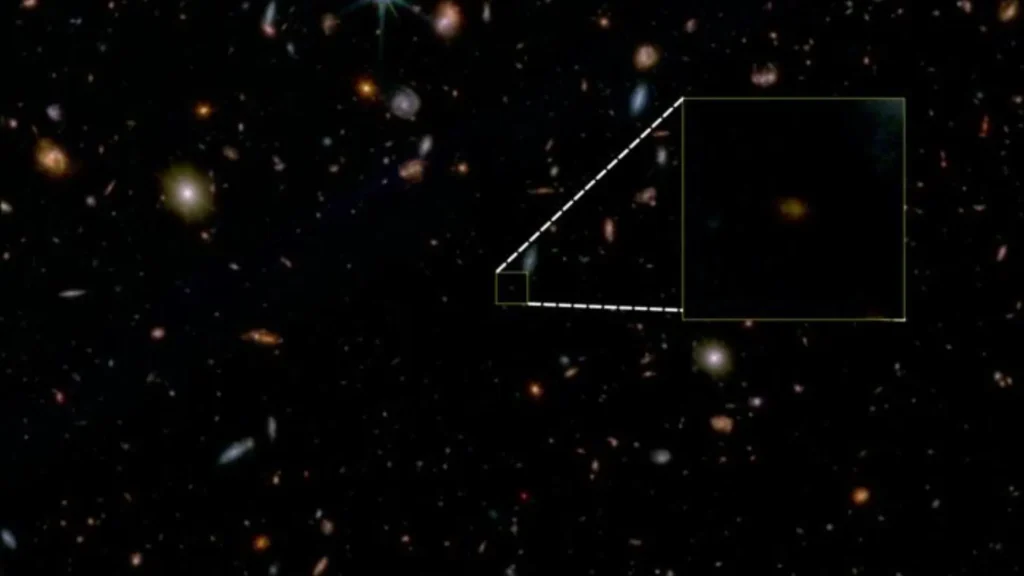Embarking on a cosmic journey through the annals of time, the James Webb Space Telescope (JWST) has unveiled a celestial marvel—a galaxy that ceased to create new stars over 13 billion years ago. This discovery, led by the University of Cambridge, marks a significant milestone in our quest to understand the universe’s infancy. The galaxy, observed as it was a mere 700 million years post-Big Bang, presents a cosmic paradox: it lived fast and died young, an unexpected tale for such an early epoch.
Cosmic Revelations
In the cosmic theatre, JWST has spotlighted a galaxy that has prematurely ended its stellar production. This ‘dead’ galaxy, the oldest of its kind ever observed, challenges our understanding of galactic life cycles. The early universe was a bustling nursery of star formation, yet this galaxy’s sudden silence whispers secrets from the cosmos’ dawn. Why should you care? Because this galaxy’s story may hold the key to the grand narrative of cosmic evolution.
Unveiling the Silent Galaxy
The JWST’s keen eye has captured a galaxy frozen in cosmic time. This galaxy’s lights dimmed after a brief but intense period of star formation, leaving astronomers puzzled. The galaxy’s rapid ‘quenching’—the cessation of star birth—poses a riddle: was it a temporary pause or a permanent end? And what cosmic forces could cause such an abrupt halt in an era of galactic abundance?

The silence of this ancient galaxy echoes loudly across the cosmos, challenging long-held beliefs. The factors that led to its dormancy could redefine our models of galactic evolution. Was it the voracious appetite of a supermassive black hole, or did the galaxy exhaust its stellar fuel too soon? This galaxy’s stillness offers a unique lens through which we may view the universe’s formative years, prompting a reevaluation of our cosmic theories.
This discovery propels us toward new frontiers in space exploration. The JWST’s unprecedented capabilities have allowed us to peer back in time, offering a glimpse into the universe’s youth. As we continue to study ‘dead’ galaxies like this one, we refine our understanding of the cosmos, eagerly anticipating the next breakthrough that will further unravel the mysteries of the universe.
Conclusion:
Thank you for joining us on this cosmic voyage. Each discovery brings us closer to understanding the grand tapestry of the universe. As we look to the stars, we are reminded that the sky is not the limit—it’s just the beginning of our quest for knowledge.



















